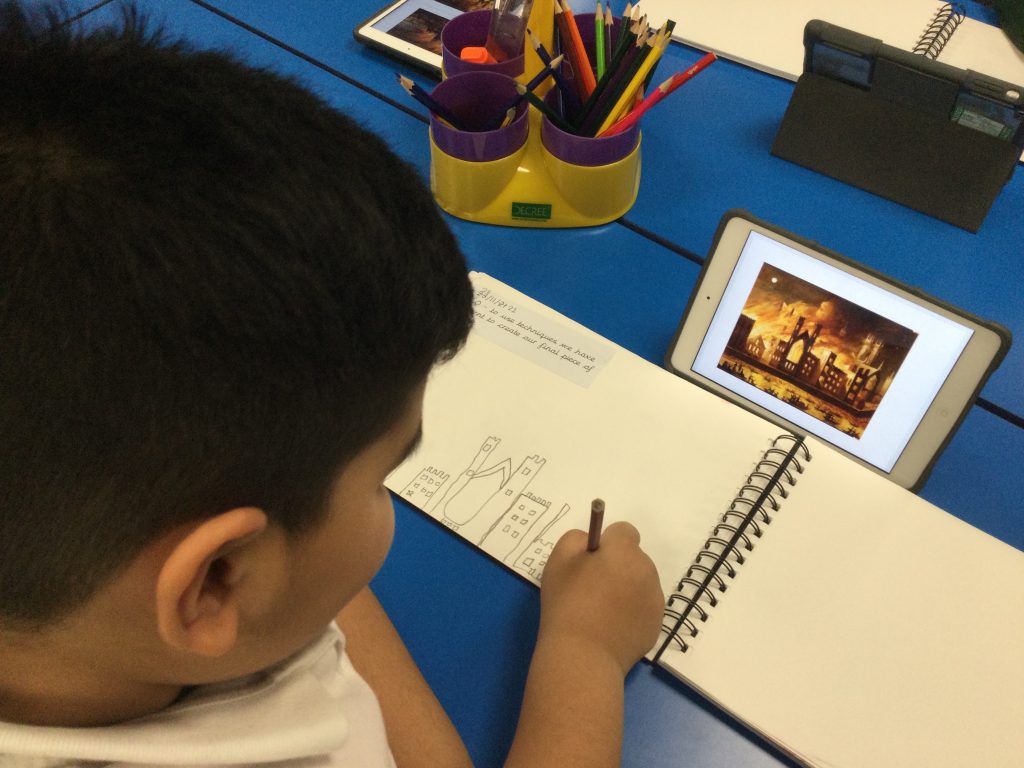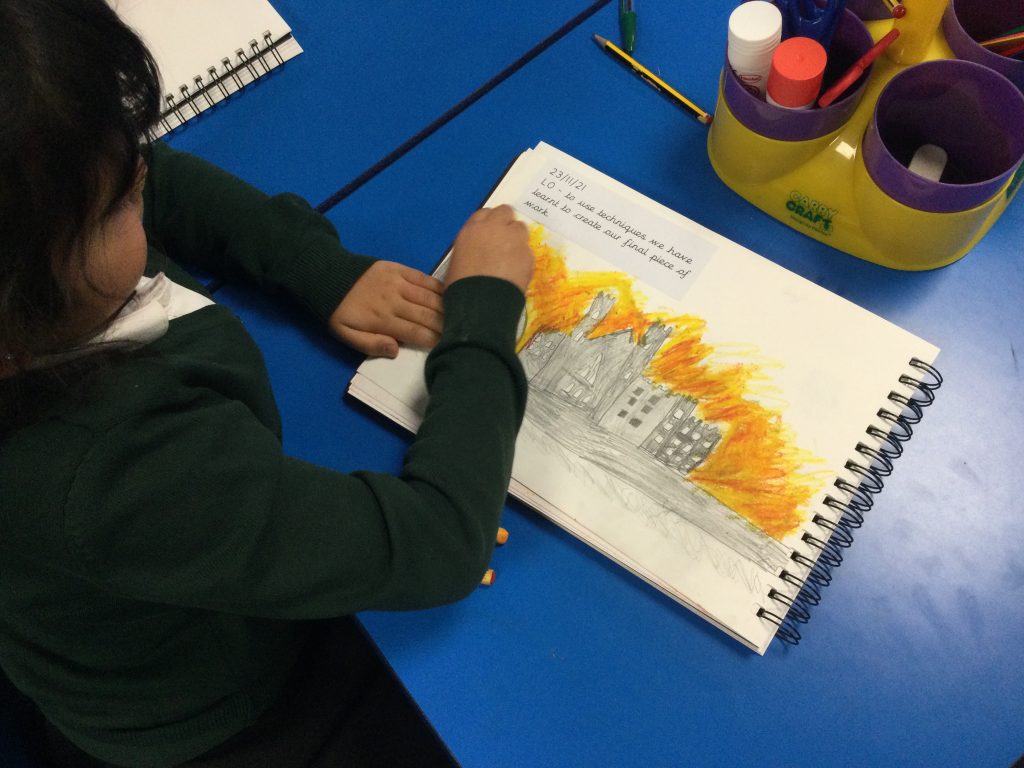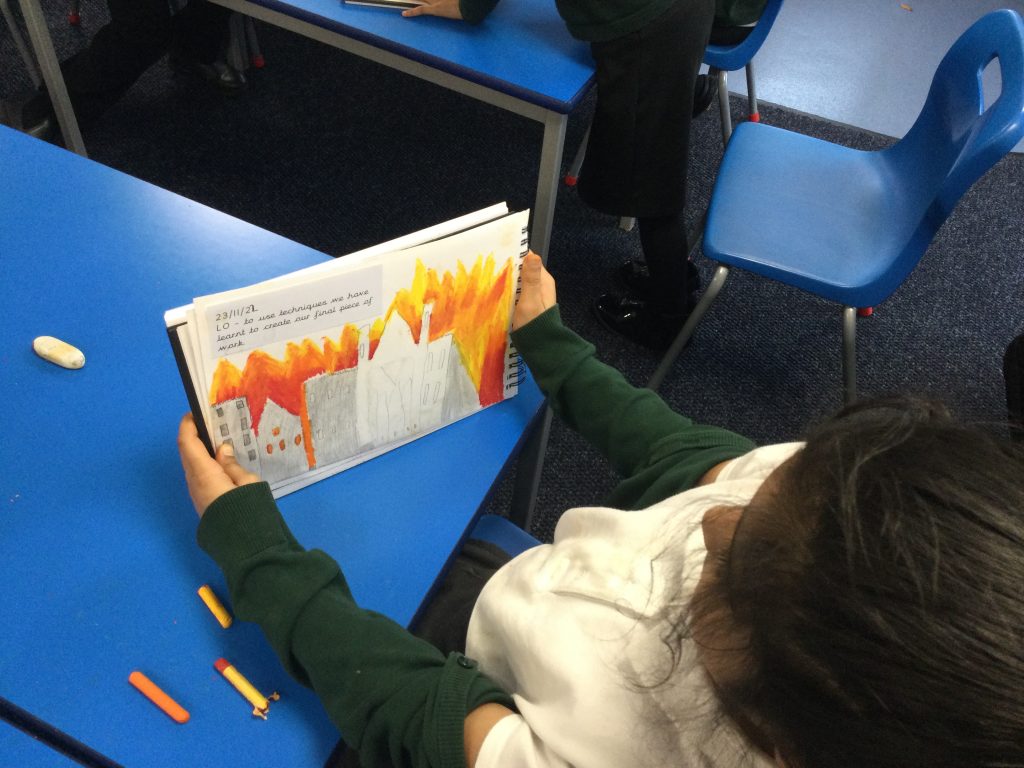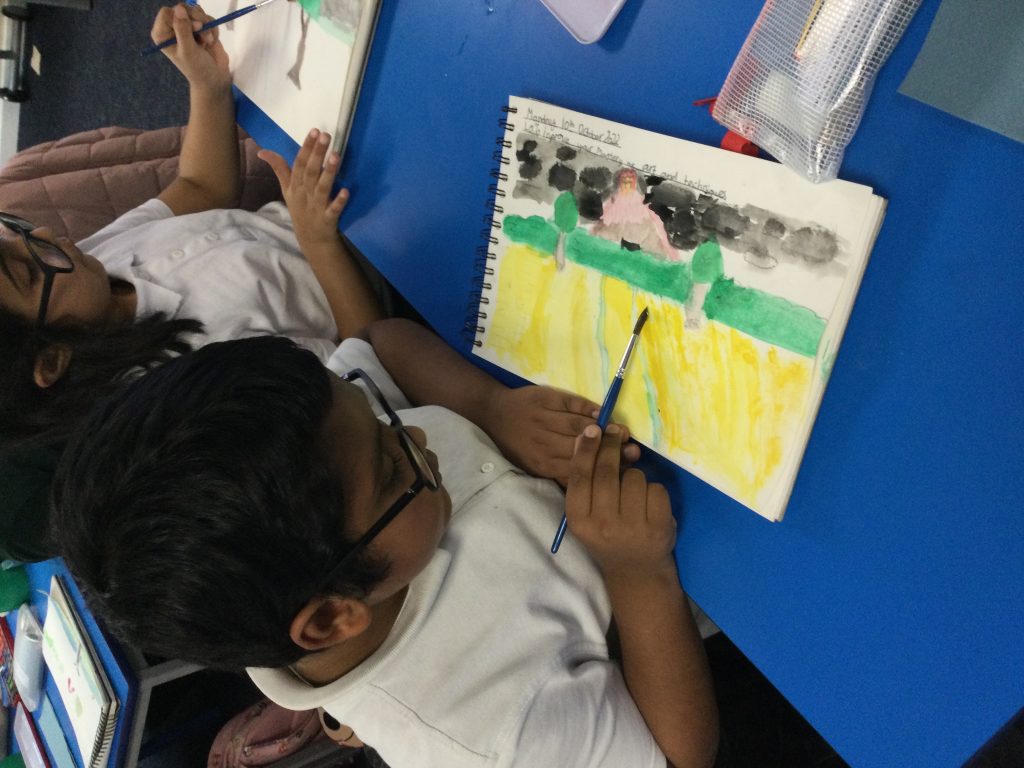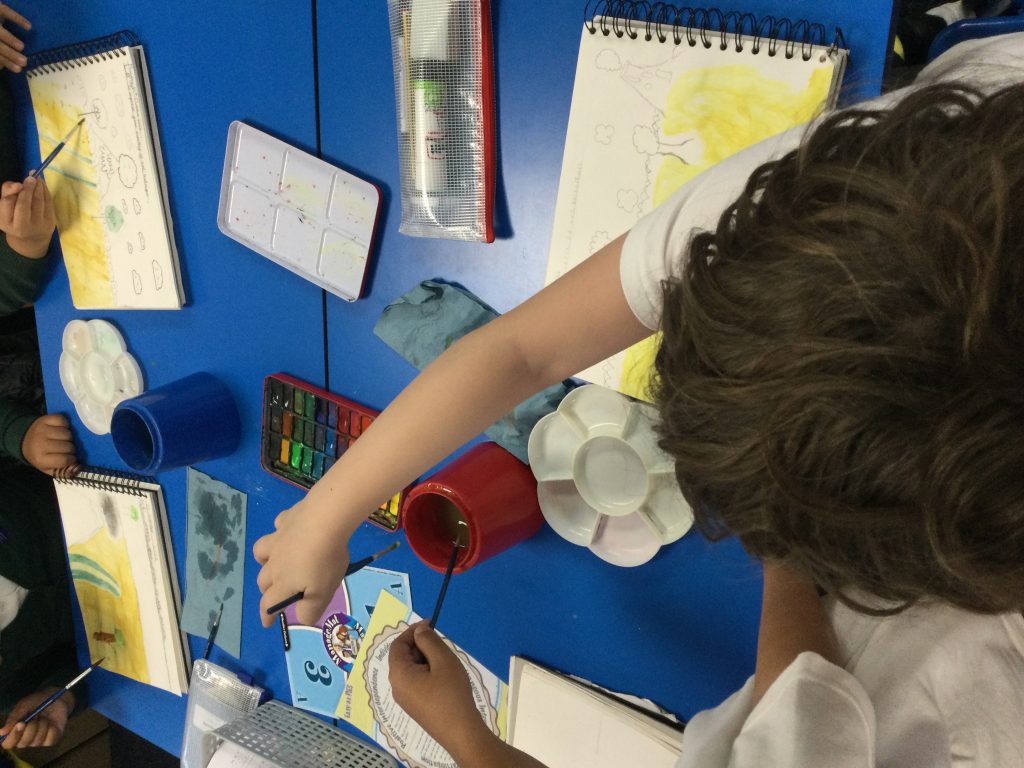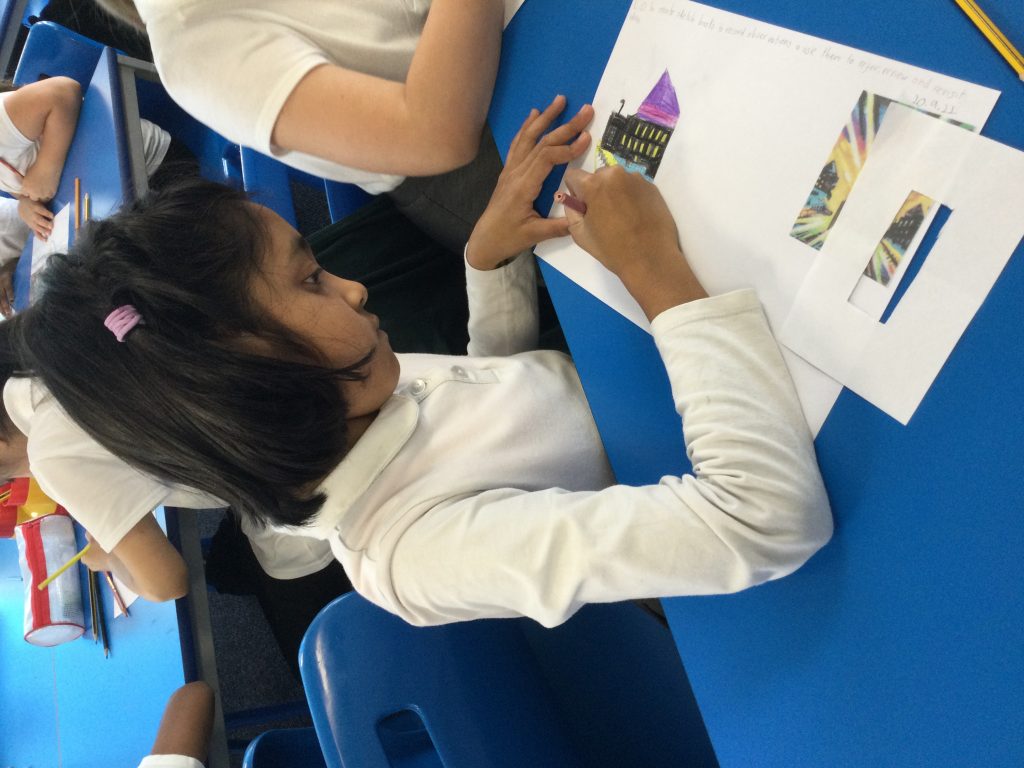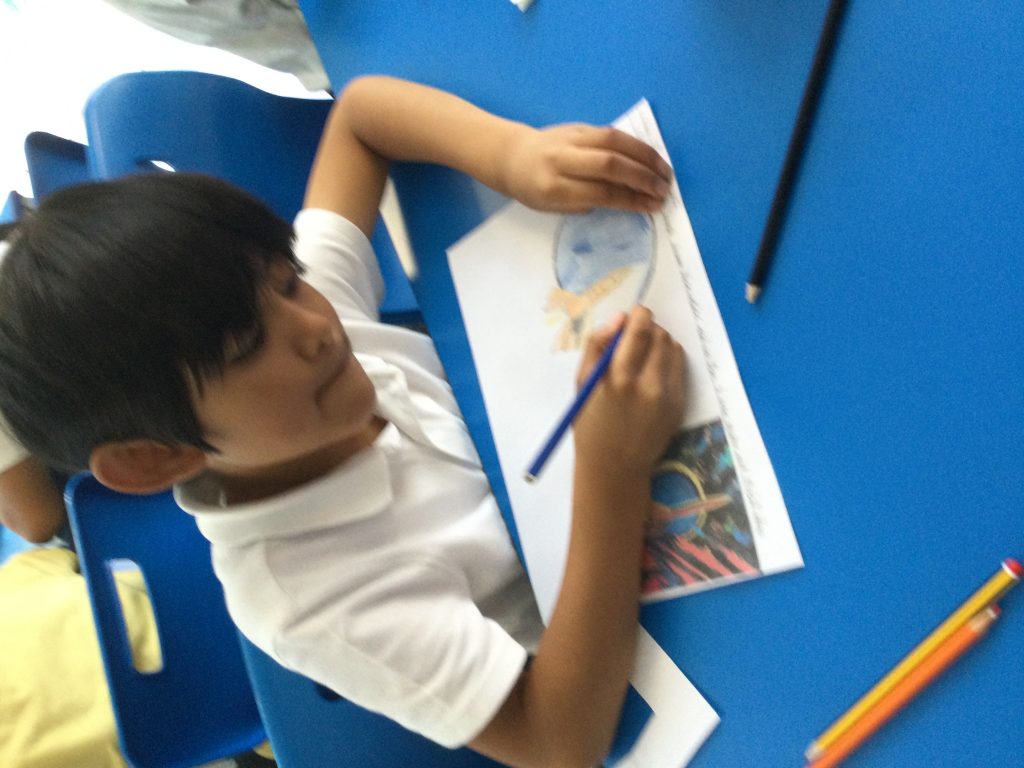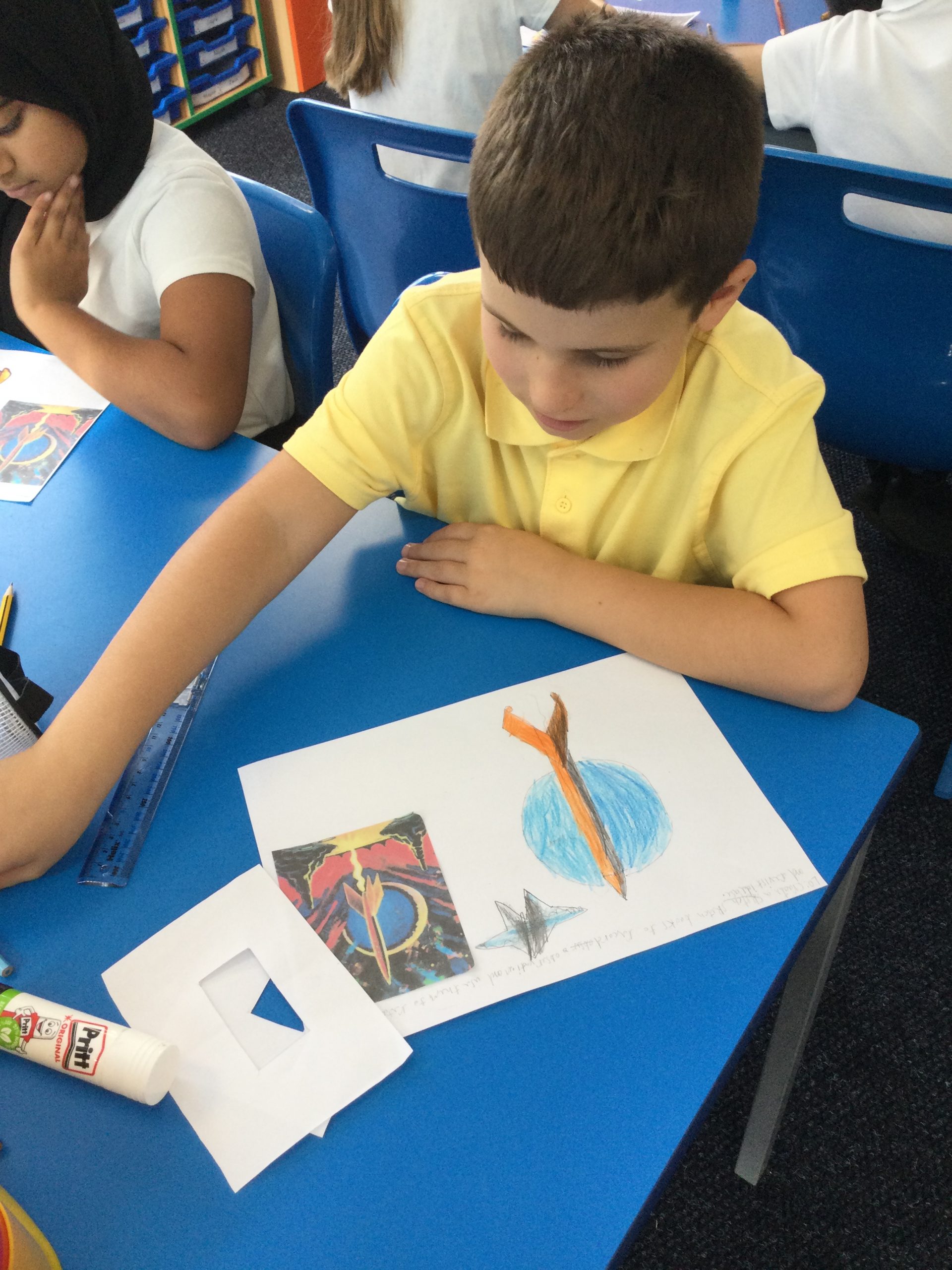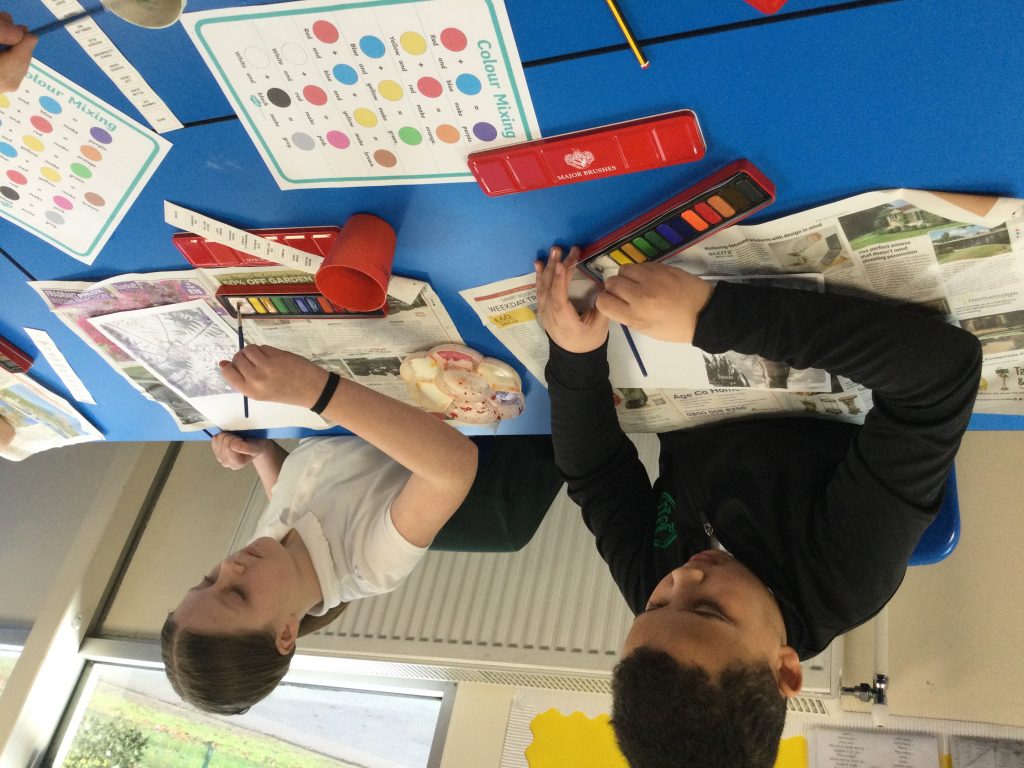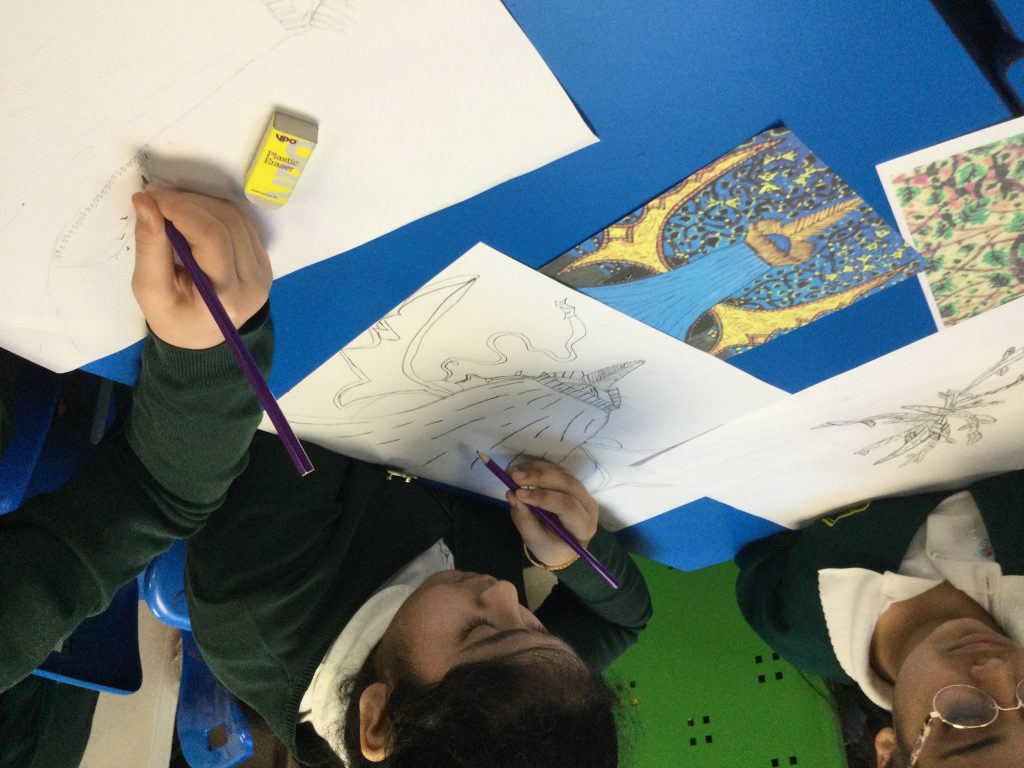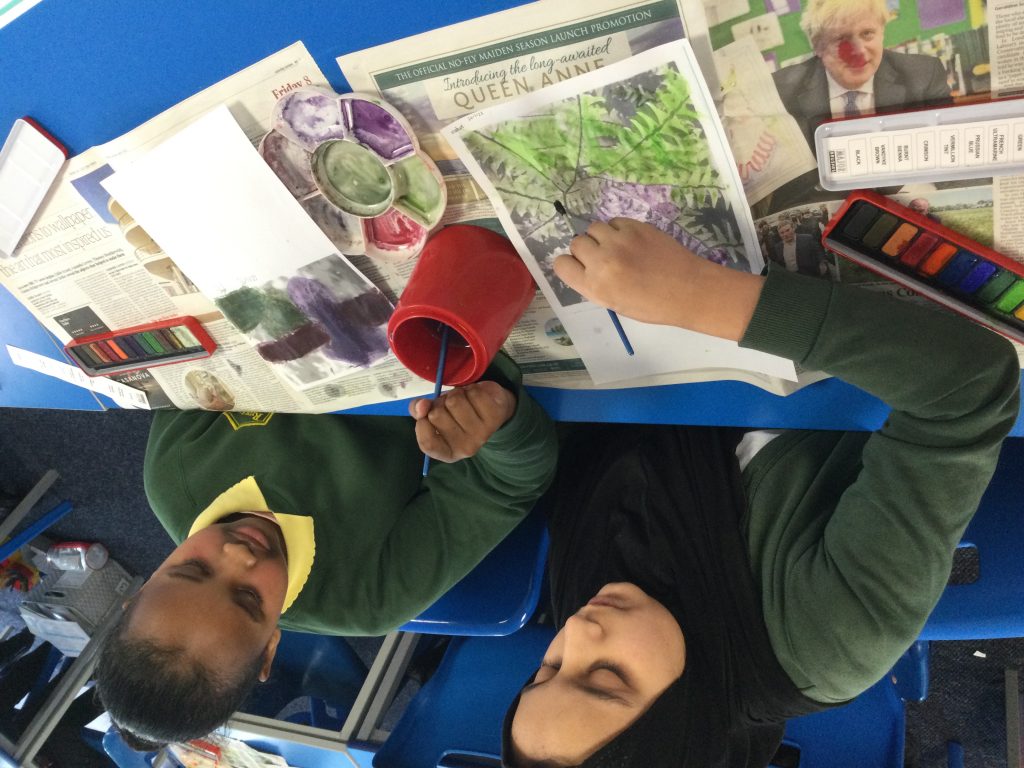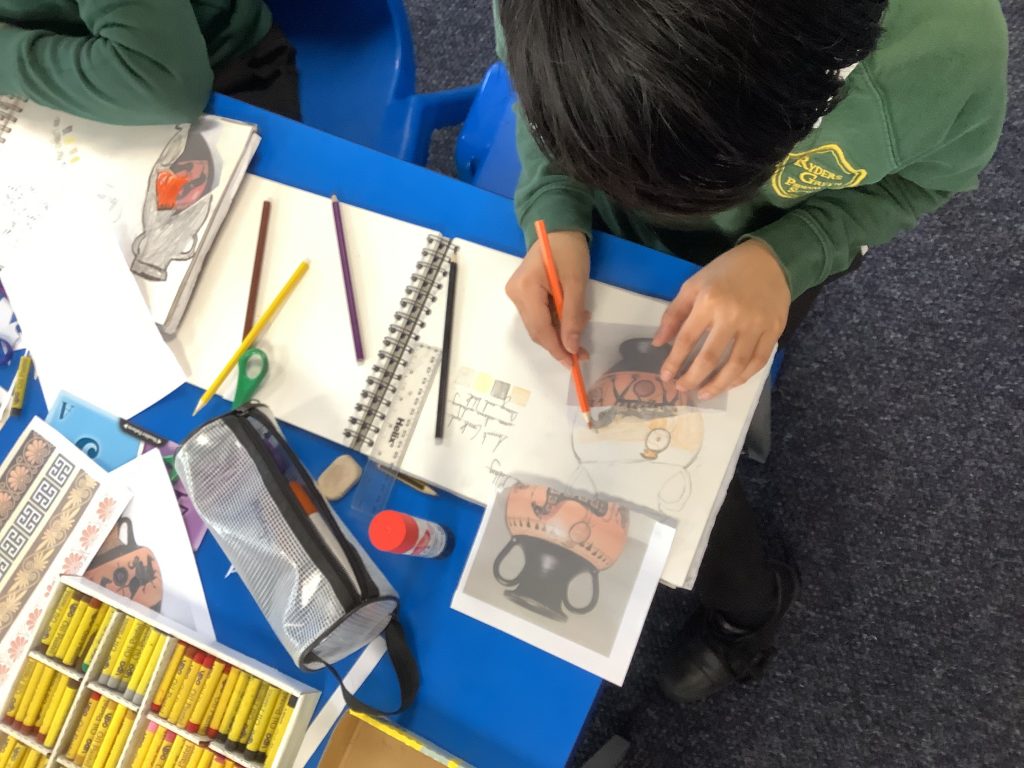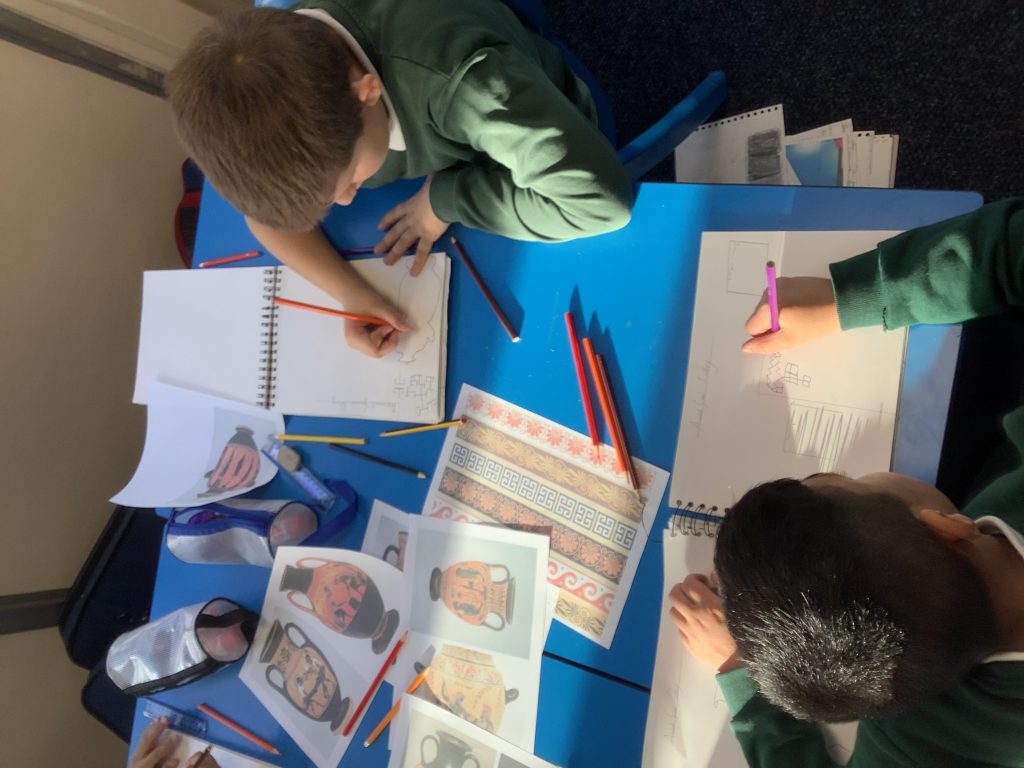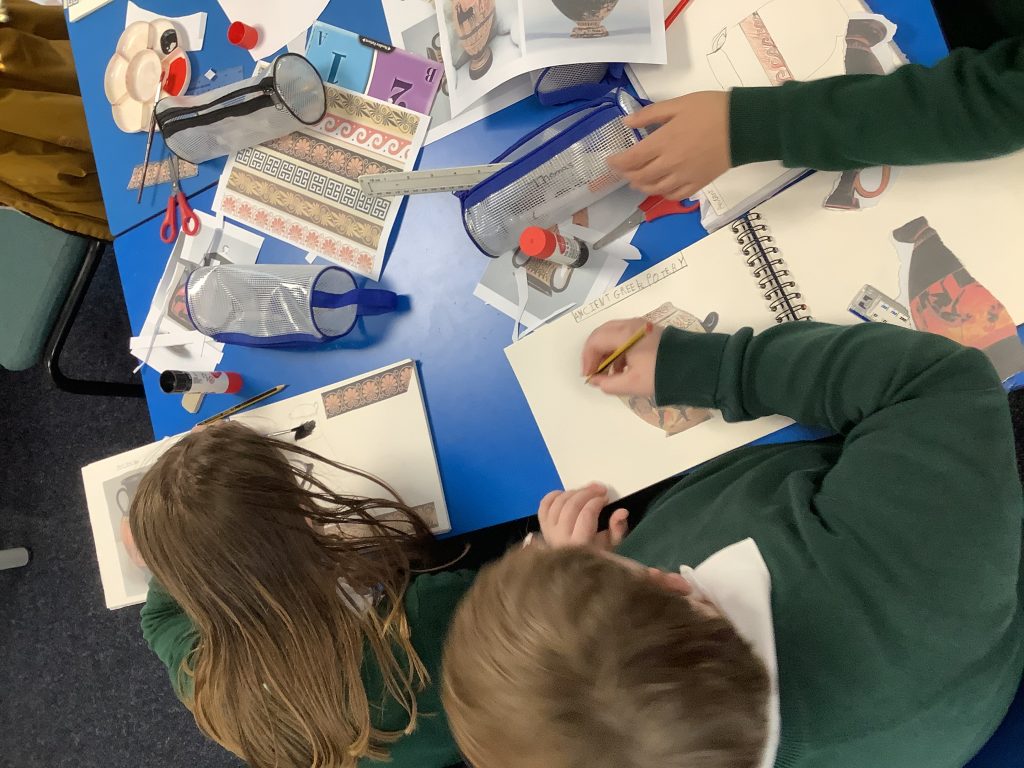
At Ryders Green, we strive to give every child, every opportunity, at their one chance in primary school.
“Every Child is an Artist” – Pablo Picasso
At Ryders Green, all pupils are provided with opportunities to grow and flourish creatively. Art can be found in all aspects of life and is a crucial part to learning, developing and understanding the world. Every child deserves to explore and celebrate the art that surrounds them and in turn create and provide art for future generations to enjoy. Our pupils are encouraged to explore and experiment in any way they desire during their art lessons, we support their development as an individual and an artist. Our Art Curriculum introduces pupils to a variety of art types, styles and artists from different time periods to different cultures and parts of the world.
Art is a subject that allows children from all backgrounds to access, appreciate and take part and this is something that we take pride in. Our curriculum provides a broad supply of knowledge and thematic learning which is also evident in our art units, developing key learning through quality earning links.
National Curriculum – Art and design key stages 1 to 2 (publishing.service.gov.uk)
Our approach to the curriculum meets our duties in the Equality Act 2010: guidance – GOV.UK (www.gov.uk) and the The Special Educational Needs and Disability Regulations 2014 (legislation.gov.uk)
What are our intentions of the Art curriculum at Ryders Green Primary School?
At Ryders Green Primary School, we have designed the National Curriculum around our key ambition for our children. We want to provide aspiration to all of our children despite the barriers they face. To do this we provide opportunities so our children can stand equal with their peers now and in their adult life.
We value Art and Design as an important part of the children’s entitlement to a broad and balanced curriculum. Art and Design provides the children with the opportunities to develop and extend skills and an opportunity to express their individual interests, thought and ideas.
Art, craft and design embody some of the highest forms of human creativity. A high-quality art and design education should engage, inspire and challenge pupils, equipping them with the knowledge and skills to experiment, invent and create their own works of art, craft and design. As pupils progress, they should be able to think critically and develop a more rigorous understanding of art and design. They should also know how art and design both reflect and shape our history, and contribute to the culture, creativity and wealth of our nation.
How do we implement our intentions for the Art curriculum at Ryders Green Primary School?
The teaching and implementation of the Art and Design Curriculum at Ryders Green Primary School is based on the National Curriculum ensuring a well-structured approach to this creative subject.
The children are taught Art as part of their termly topic work. Following the coverage of the terms each child will be taught skills and knowledge on painting, drawing and sculpture. As well as, the skills to be an independent artist and the work of famous artists.
Year 1:
Autumn – 5th of November, focus on painting.
Spring – Animals, focus on drawing
Summer – Journey around the world, focus on sculpture
Year 2:
Autumn – Great Fire of London, focus on drawing
Spring – Food, focus on painting
Summer – Seven Wonders of the World, focus on sculpture
Year 3:
Autumn – Ancient Egyptians, focus on painting
Spring – Stone Age, focus on sculpture
Summer – The Seaside, focus on drawing
Year 4:
Autumn – Volcanoes, focus on painting
Spring – Great British Road Trip, focus on sculpture
Summer – Children in the Past, focus on drawing
Year 5:
Autumn – Space, focus on drawing
Spring – The Amazon, focus on painting
Summer – The Mayans, focus on sculpture
Year 6:
Autumn – WW2, focus on drawing
Spring – Ancient Greece, focus on sculpture
Summer – The Future, focus on painting
The work of famous local, national and international artists are explored to enhance the children’s learning.
The children’s learning is further enhanced with a whole school arts week in the summer term where the children have the opportunity for collaborative working and exploring the different styles and techniques of a range of artists.
Children are also given the opportunity to explore an art gallery, in workshops from IKON Gallery Birmingham to take part in skill development, understanding the role of a gallery and also learning about the careers linked to the arts.
Early Years Foundation Stage
Pupils explore and use a variety of media and materials through a combination of child initiated and adult directed activities. They have opportunities to learn to:
- Explore the textures, movement, feel and look of different media and materials
- Respond to a range of media and materials, develop their understanding of them in order to manipulate and create different effects.
- Use different media and materials to express their own ideas
- Explore colour and use for a particular purpose
- Develop skills to use simple tools and techniques competently and appropriately
- Select appropriate media and techniques and adapt their work where necessary
Key stage 1
Pupils are taught:
- to use a range of materials creatively to design and make products
- to use drawing, painting and sculpture to develop and share their ideas, experiences and imagination
- to develop a wide range of art and design techniques in using colour, pattern, texture, line, shape, form and space
- about the work of a range of artists, craft makers and designers, describing the differences and similarities between different practices and disciplines, and making links to their own work.
Key stage 2
Pupils are taught to develop their techniques, including their control and their use of materials, with creativity, experimentation and an increasing awareness of different kinds of art, craft and design.
Pupils are taught:
- to create sketch books to record their observations and use them to review and revisit ideas
- to improve their mastery of art and design techniques, including drawing, painting and sculpture with a range of materials [for example, pencil, charcoal, paint, clay]
- about great artists, architects and designers in history.
What is our intended impact of Art at Ryders Green Primary School?
Summative and Formative assessments take place once a term throughout the year and teachers record the progress and attainment against the National Curriculum expectations of attainment. Teachers use this information to inform future lessons; ensuring children are supported and challenged appropriately. This data is analysed on a termly basis to inform and address any trends or gaps in attainment.
Further information is gathered through pupil questionnaires; highlighting strengths and achievement and any improvements, knowledge and skills that still need to be embedded.
Final end of year assessments are made using assessment criteria that has been developed in line with the national curriculum and Classroom Monitor. Resulting in the identification of the level in which the child is working.
Children in Foundation Stage are assessed within Expressive Arts and Design and their progress is tracked termly using the EYFS Documentation and recorded on Classroom Monitor. Age related expectation levels are reported to parents at the end of the reception year.
Radiography as a career?
Shadows at Mount Everest
Updated February 2023
